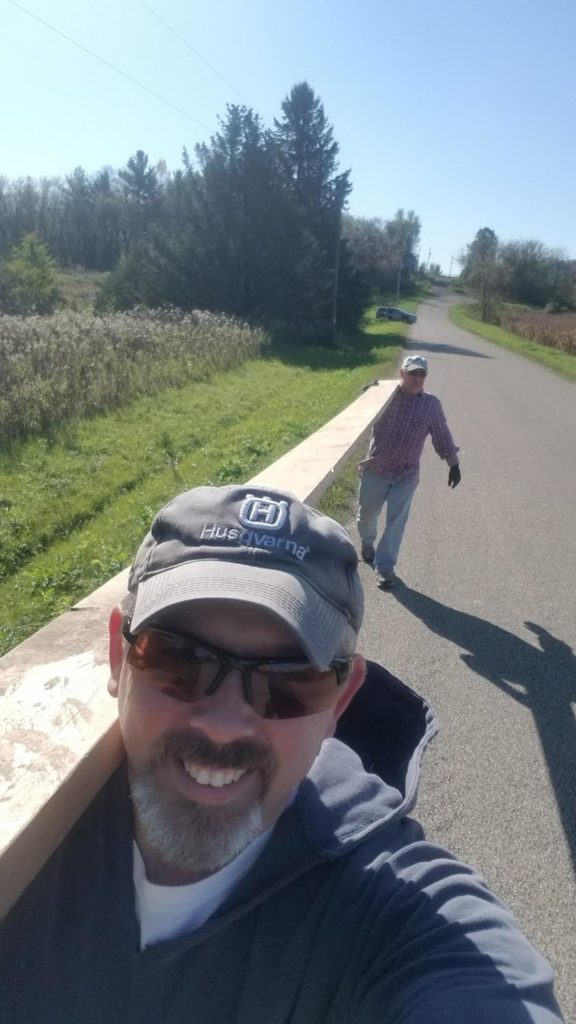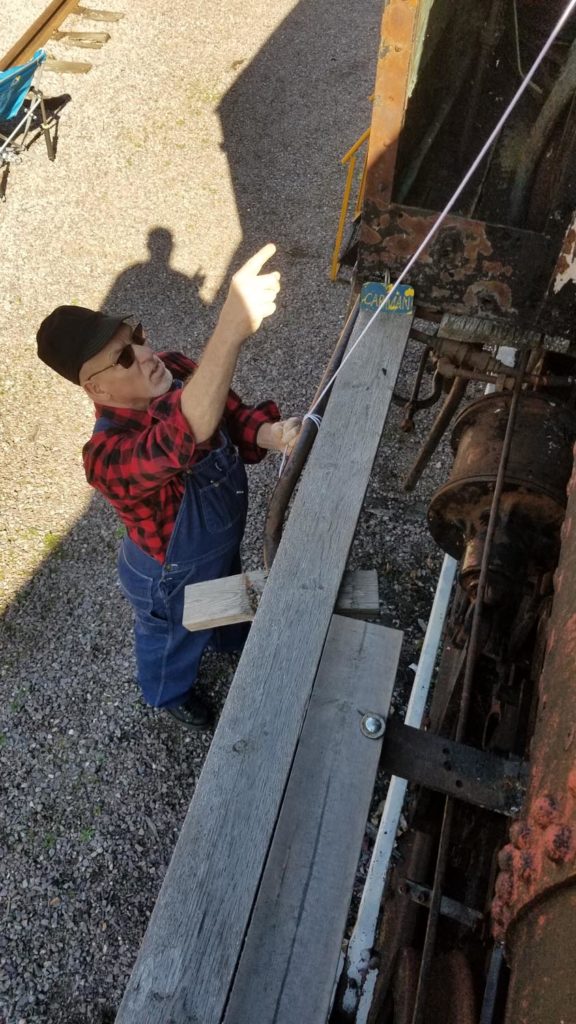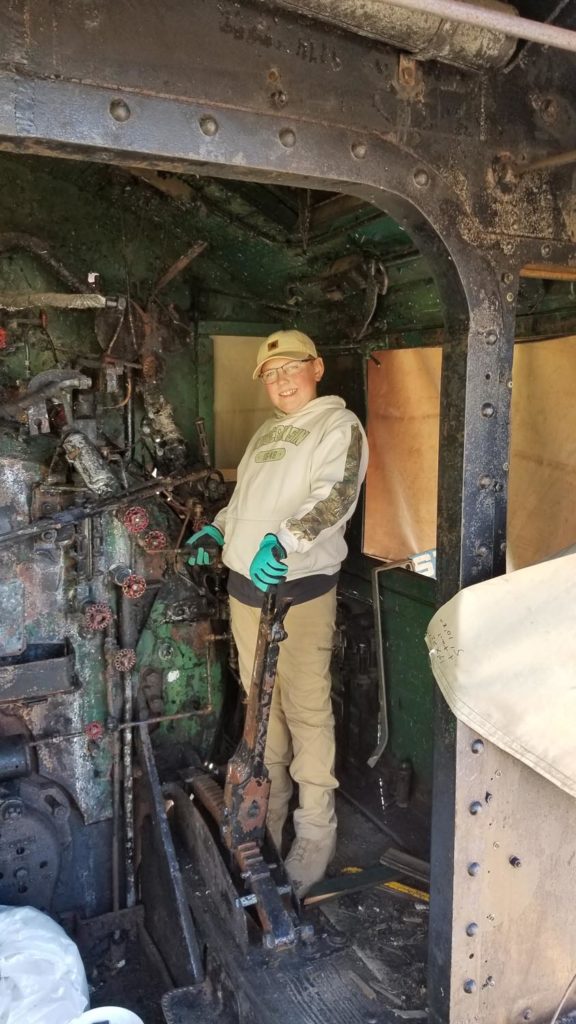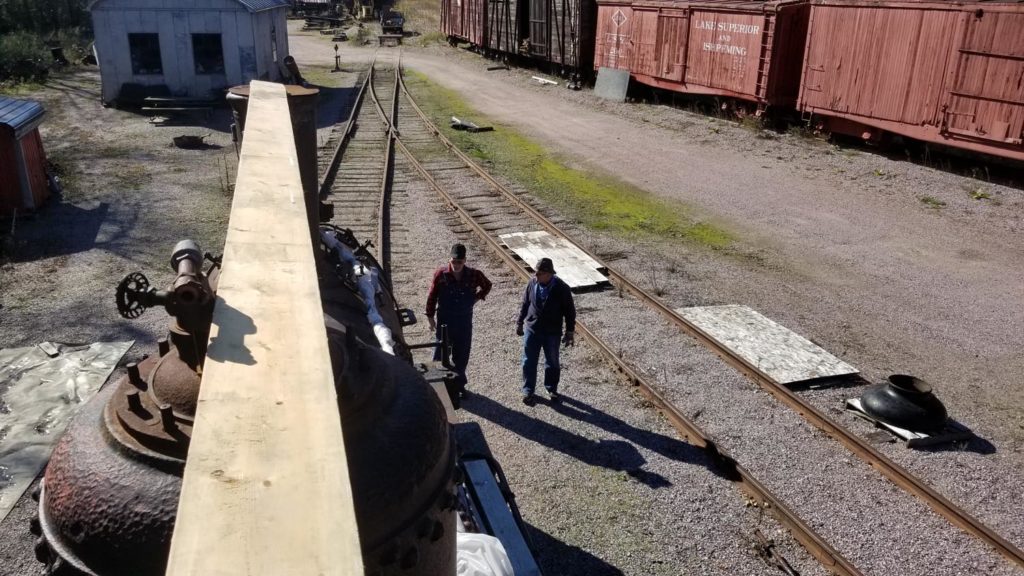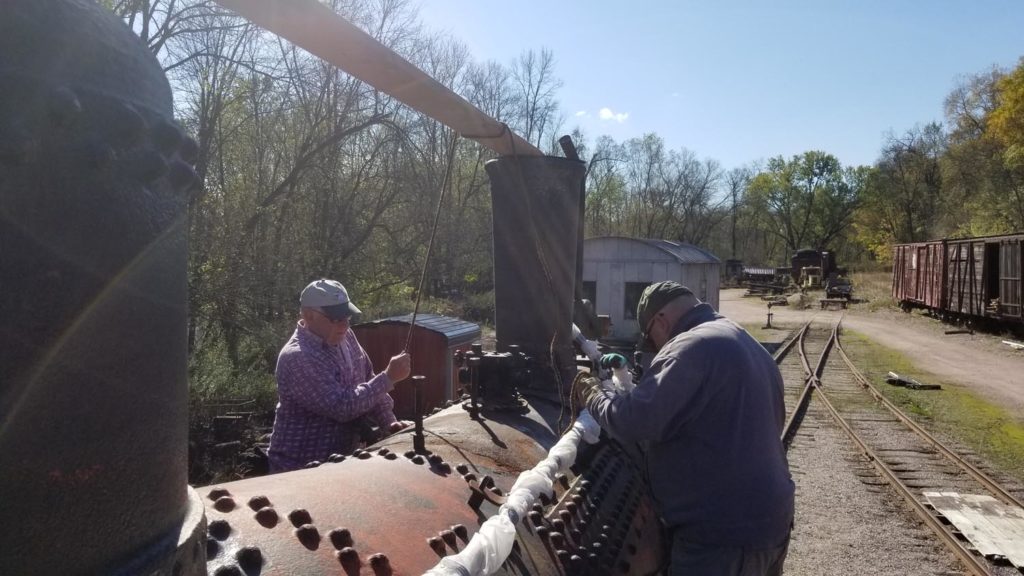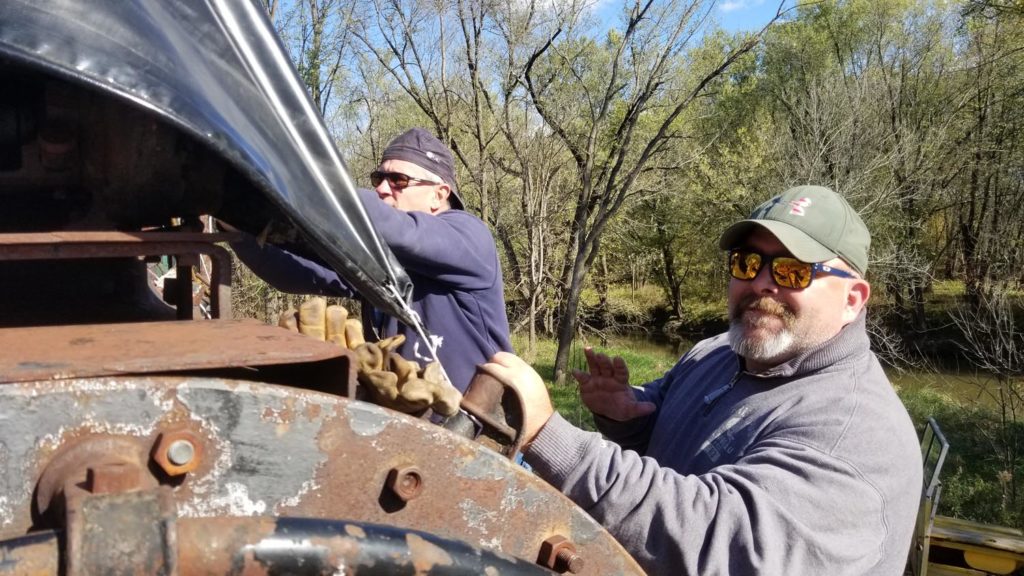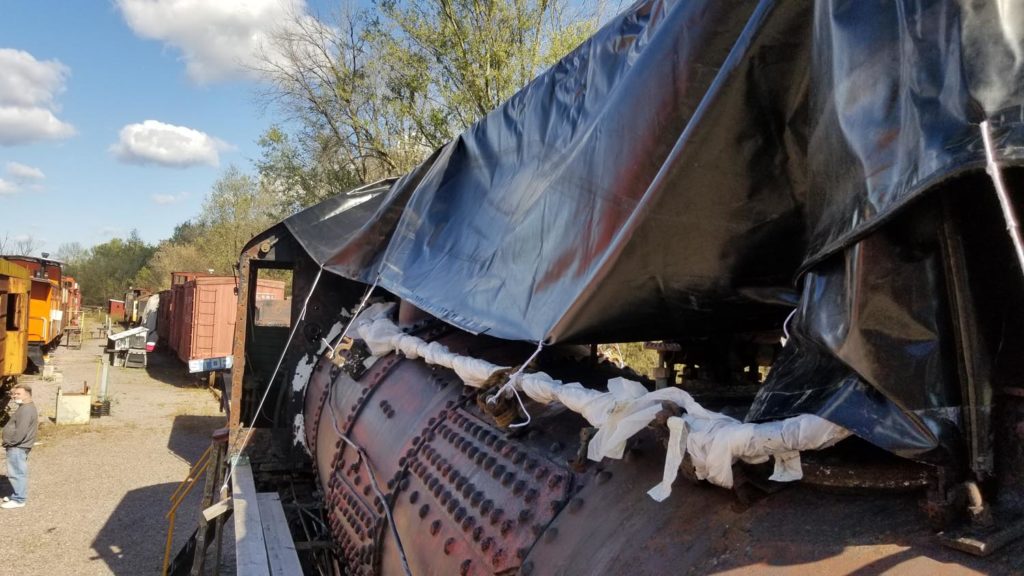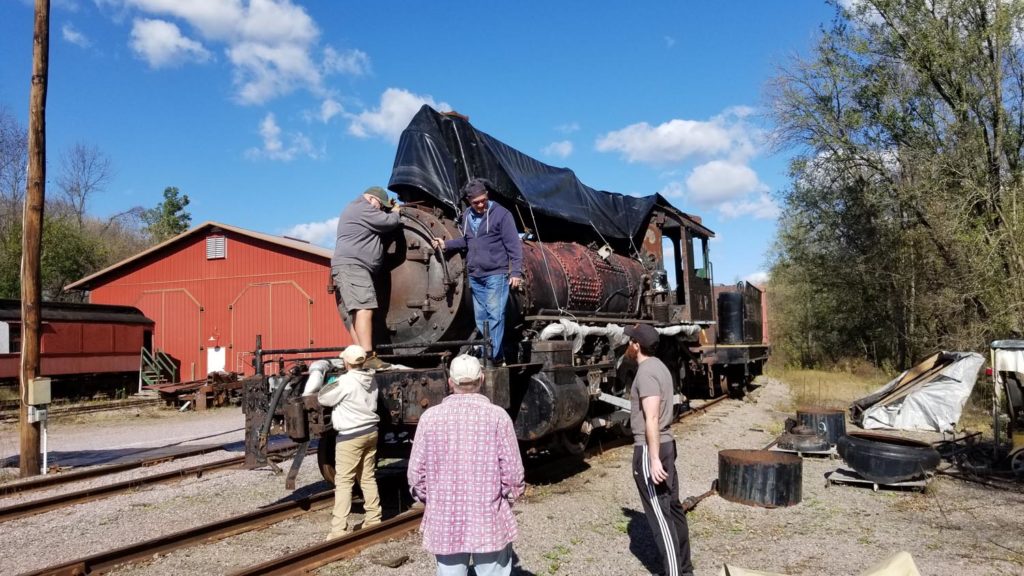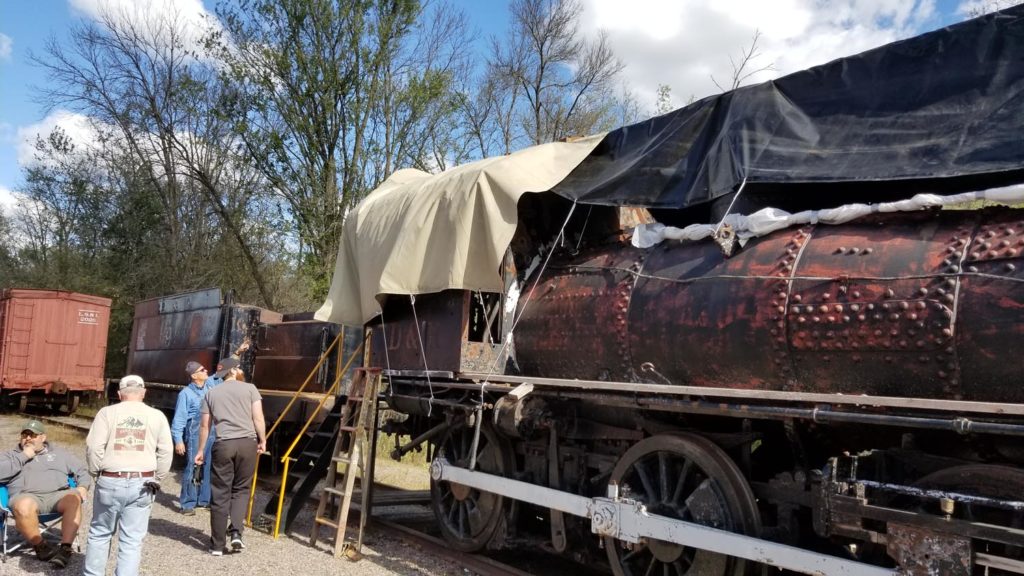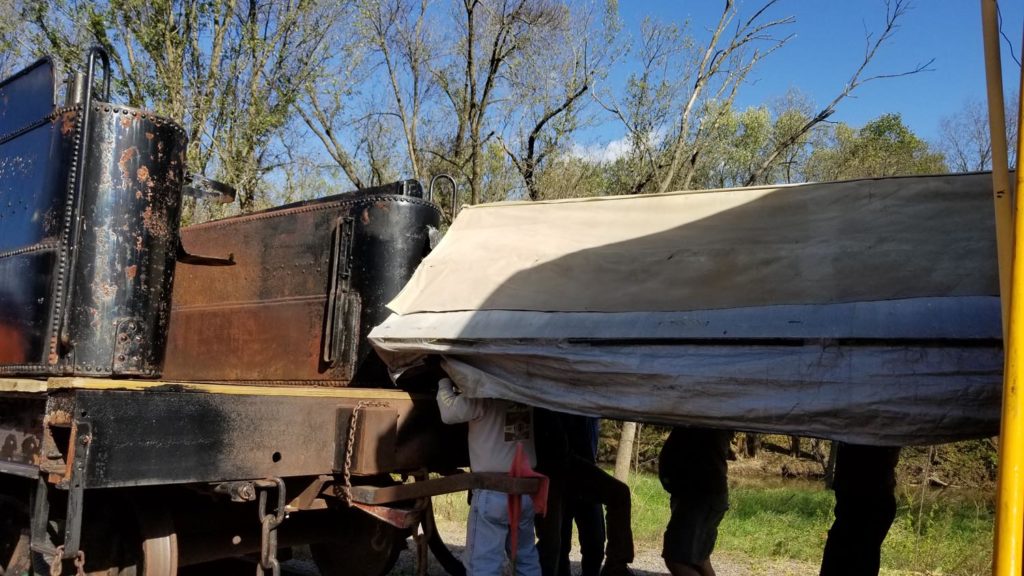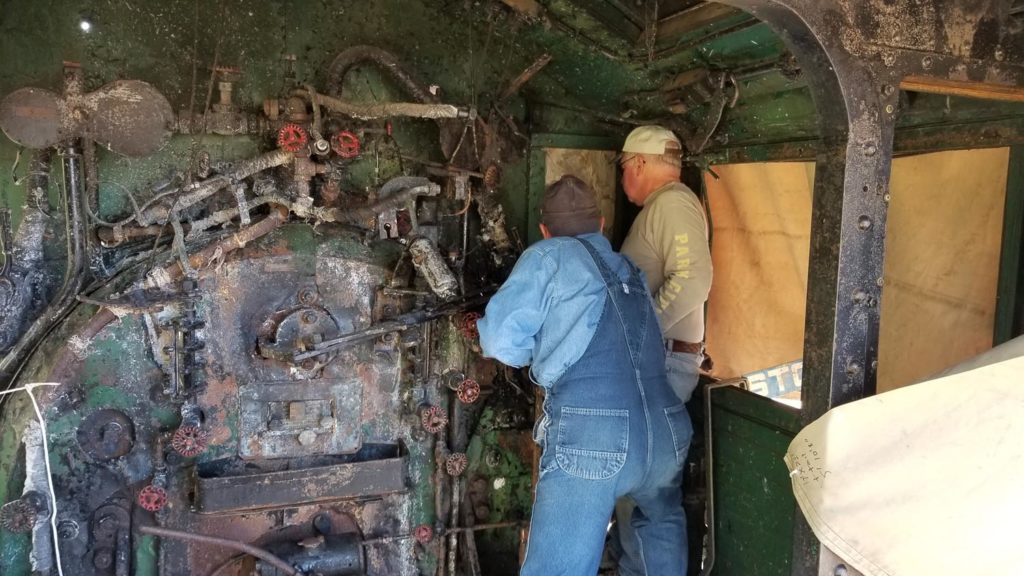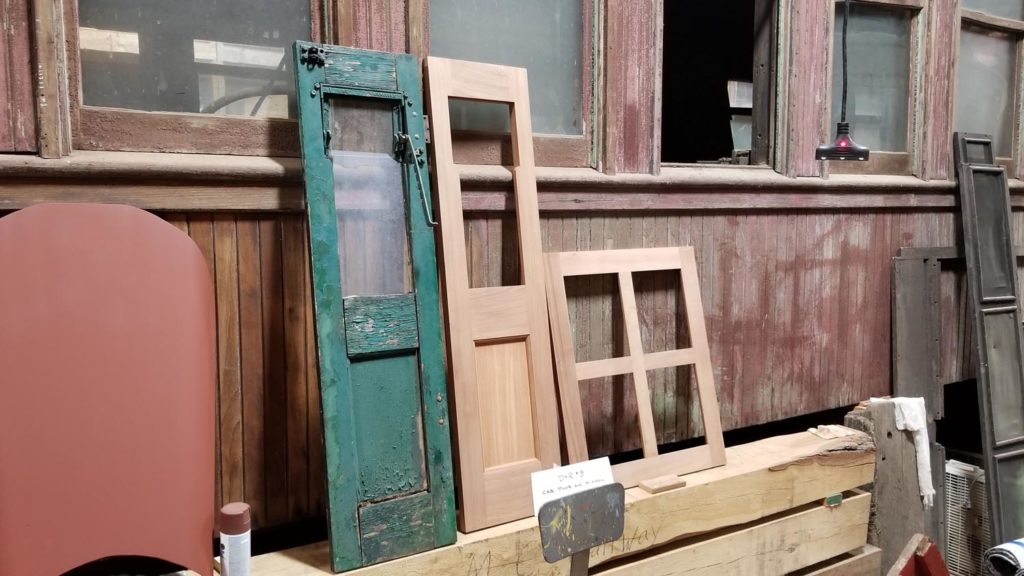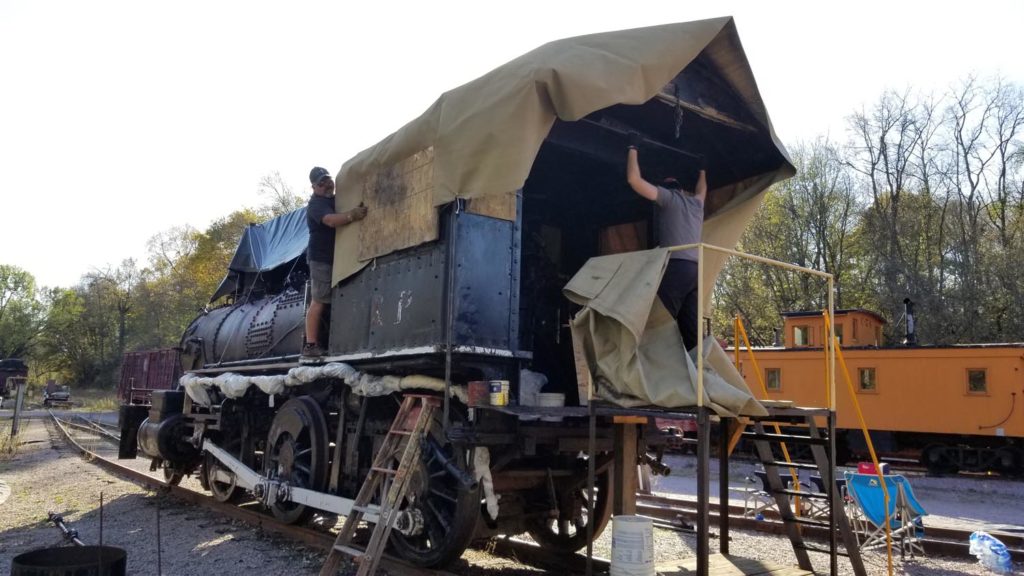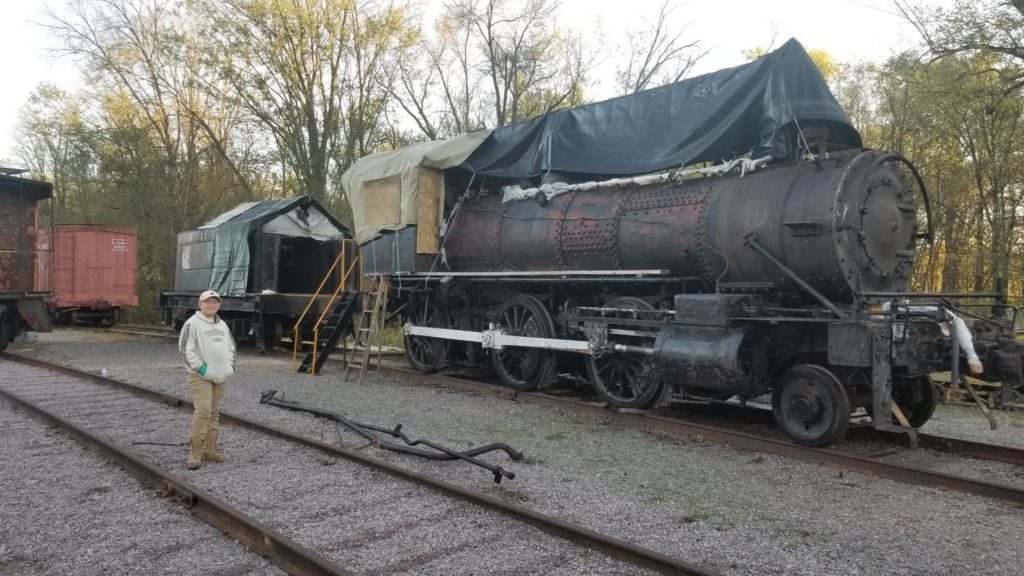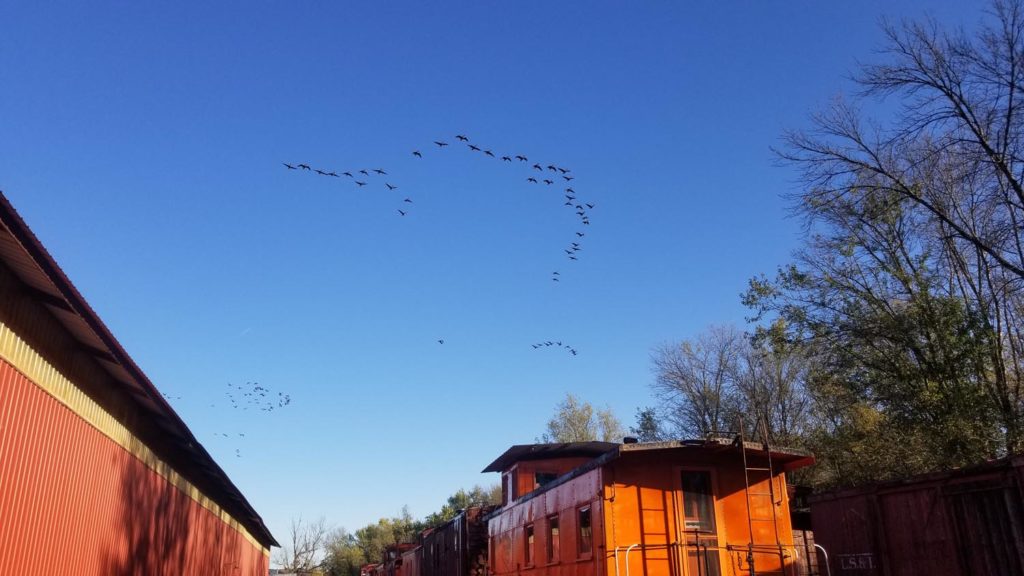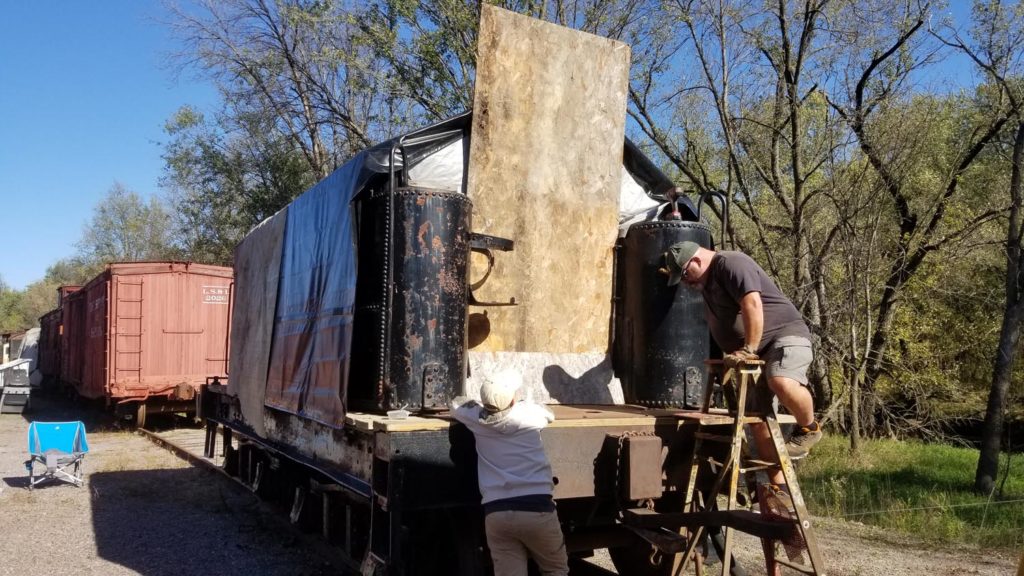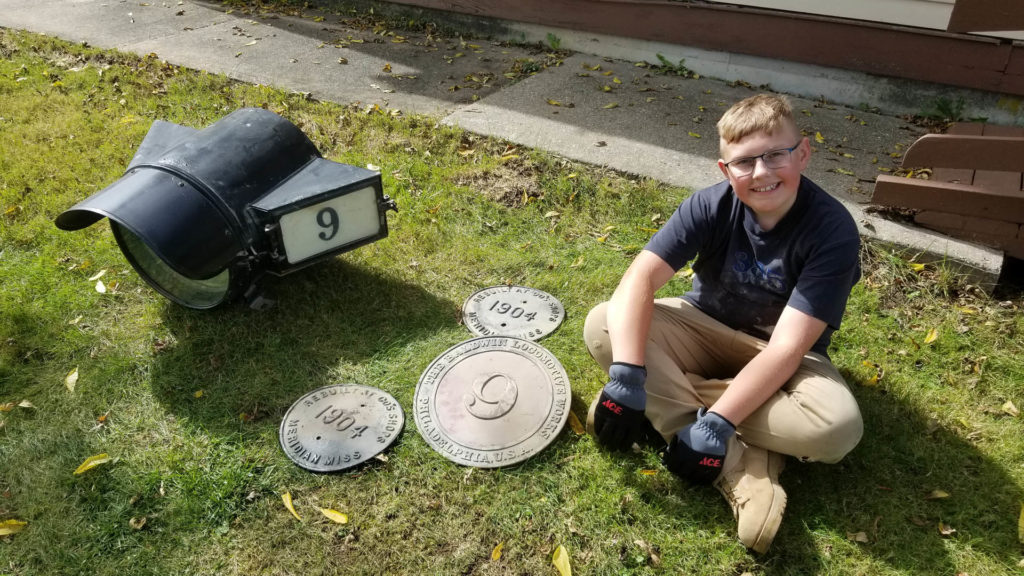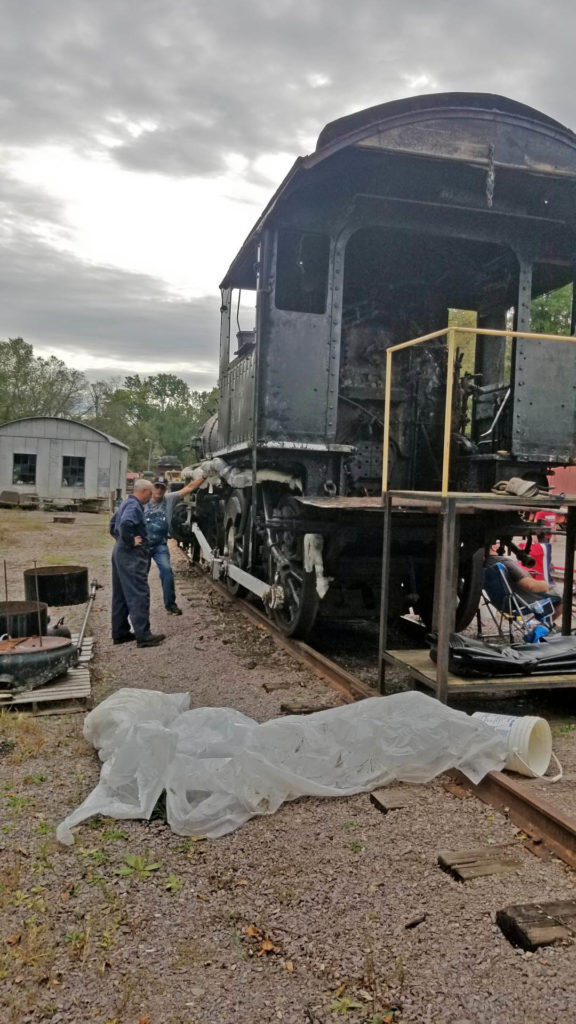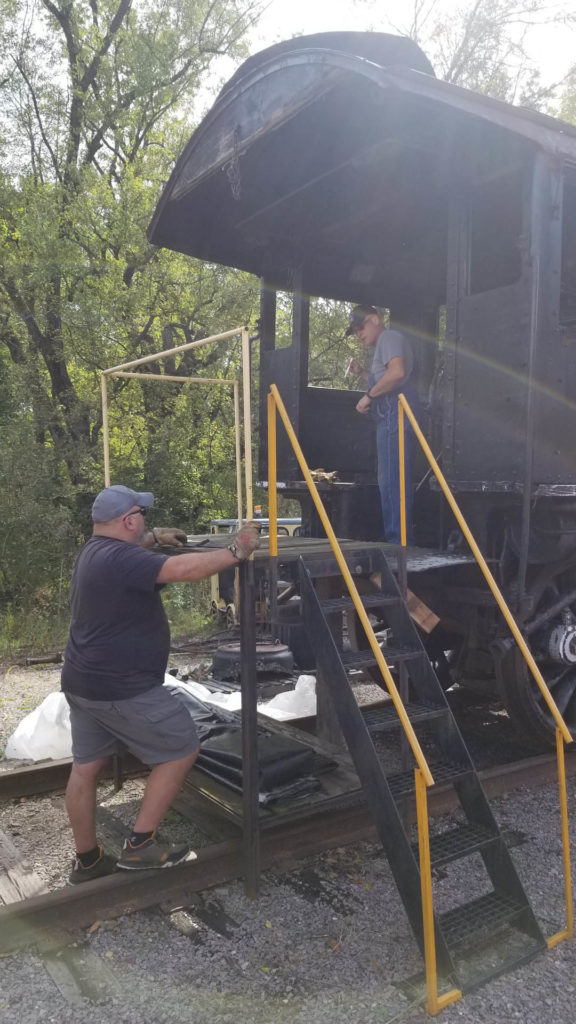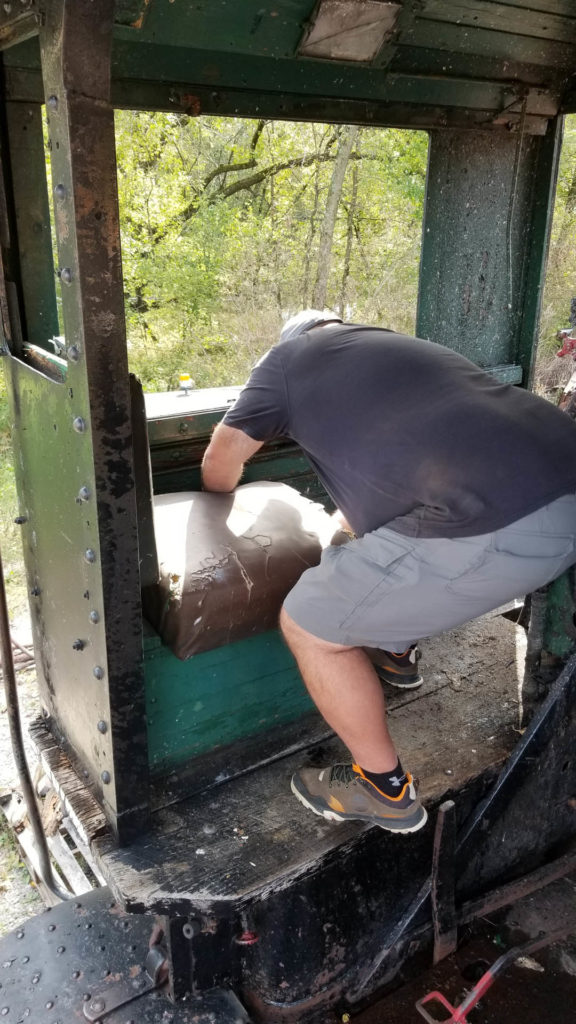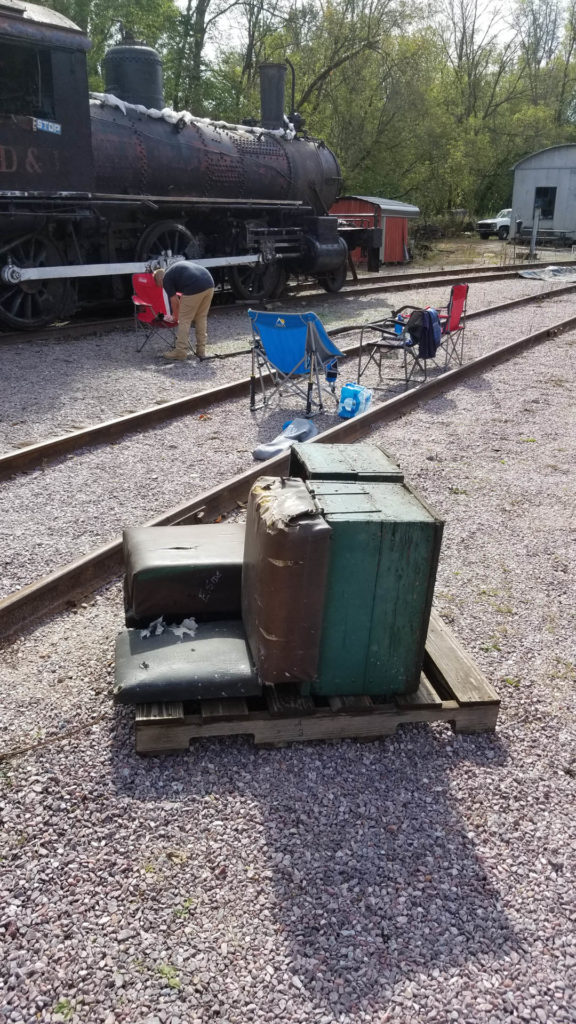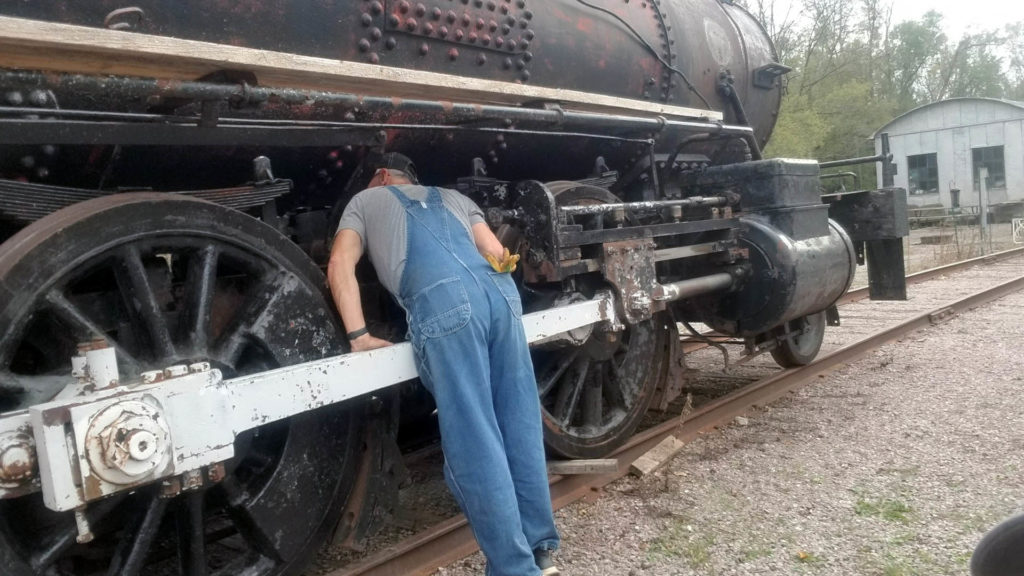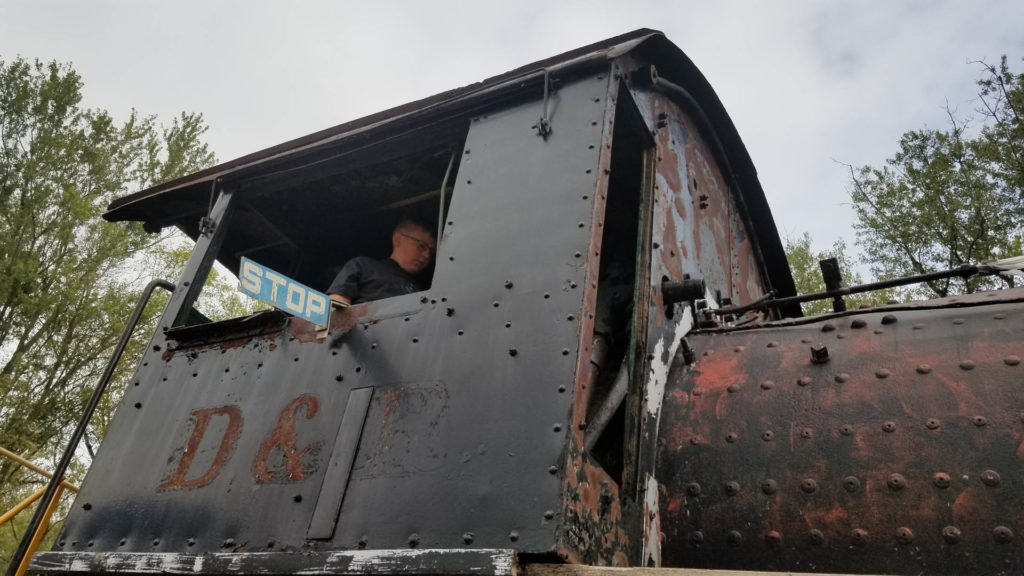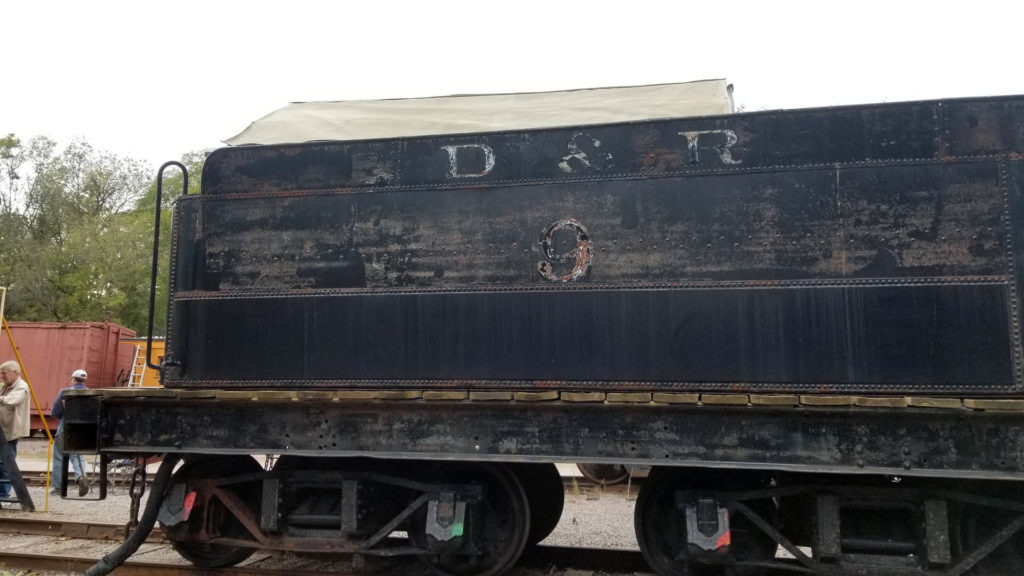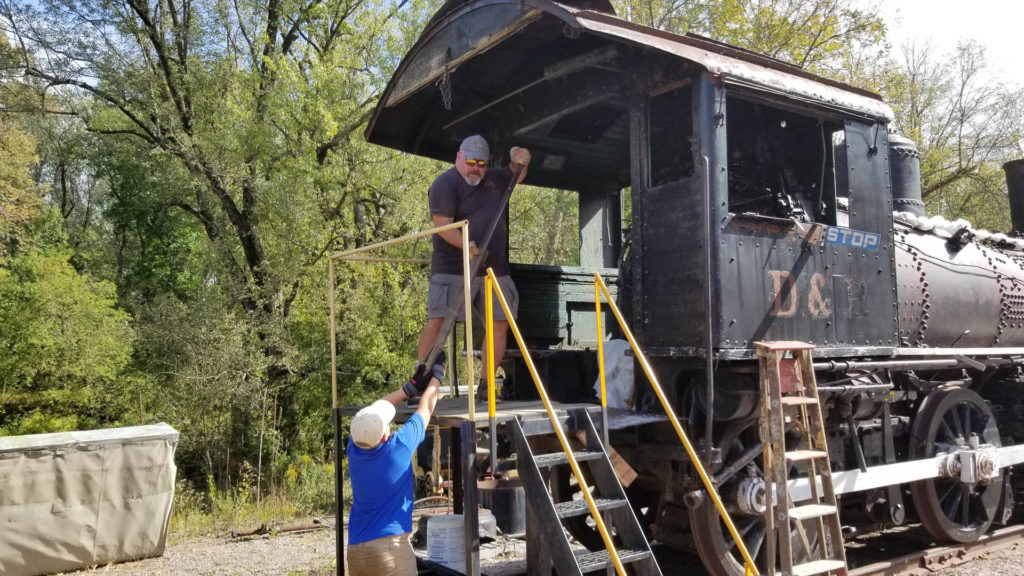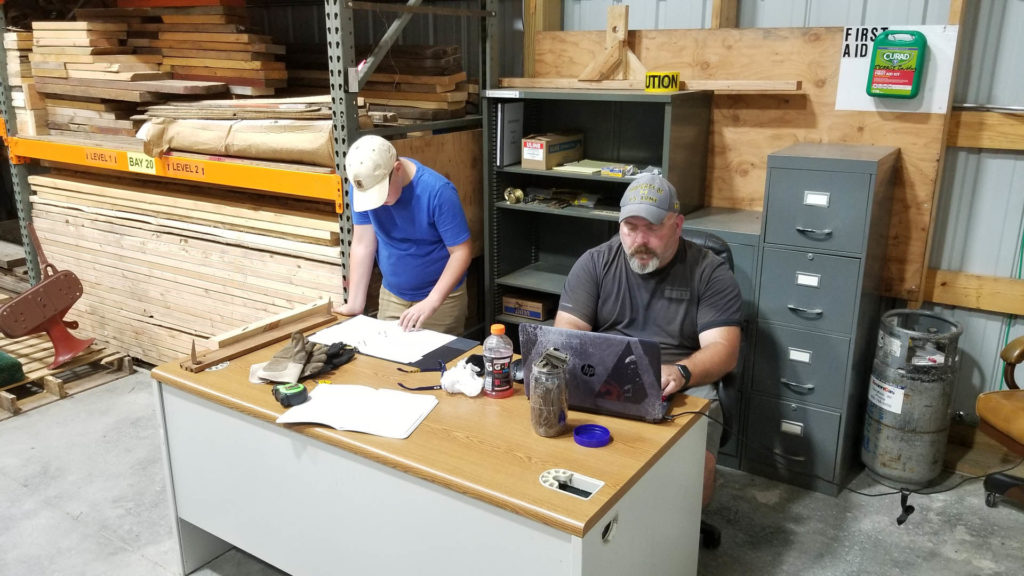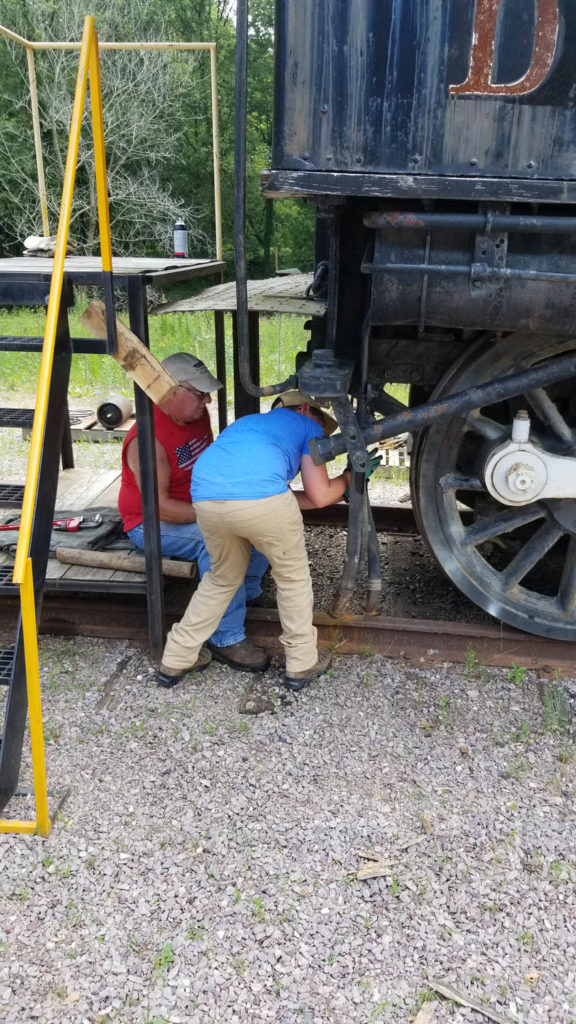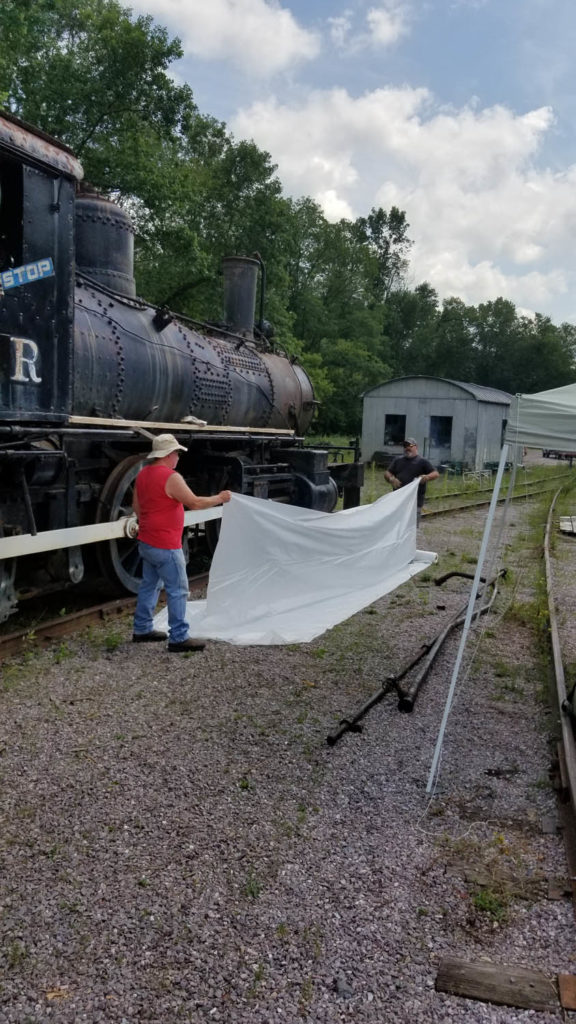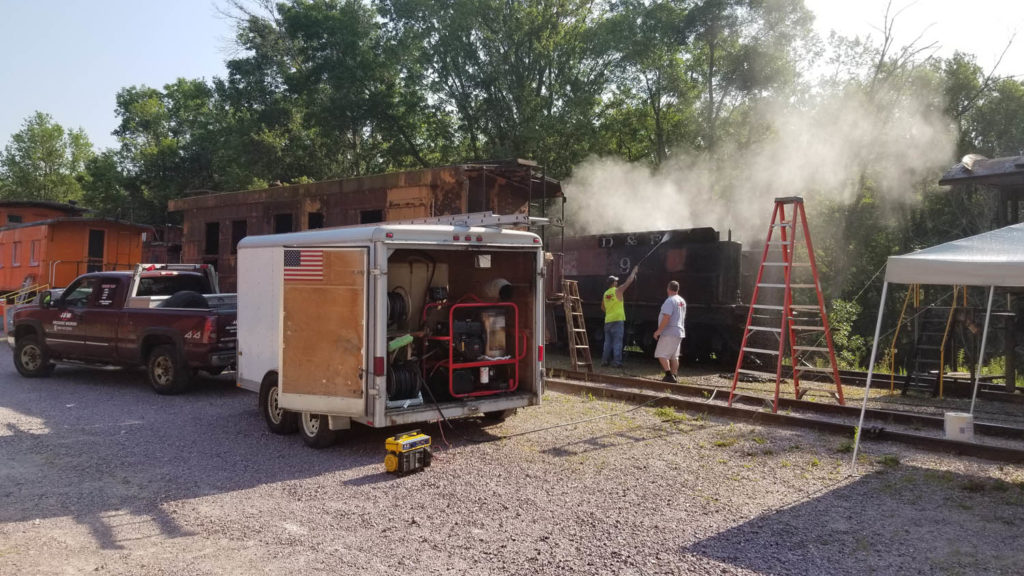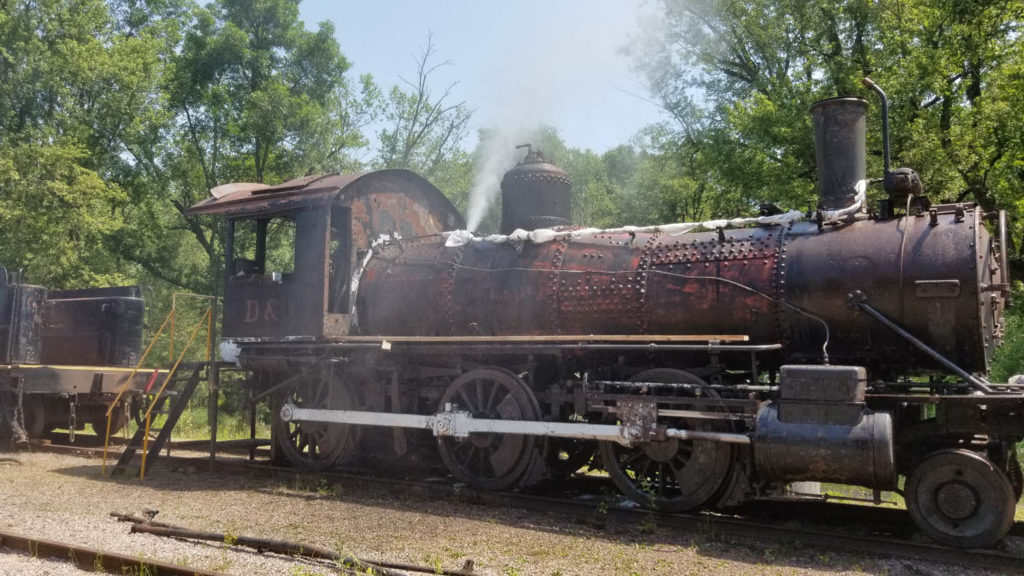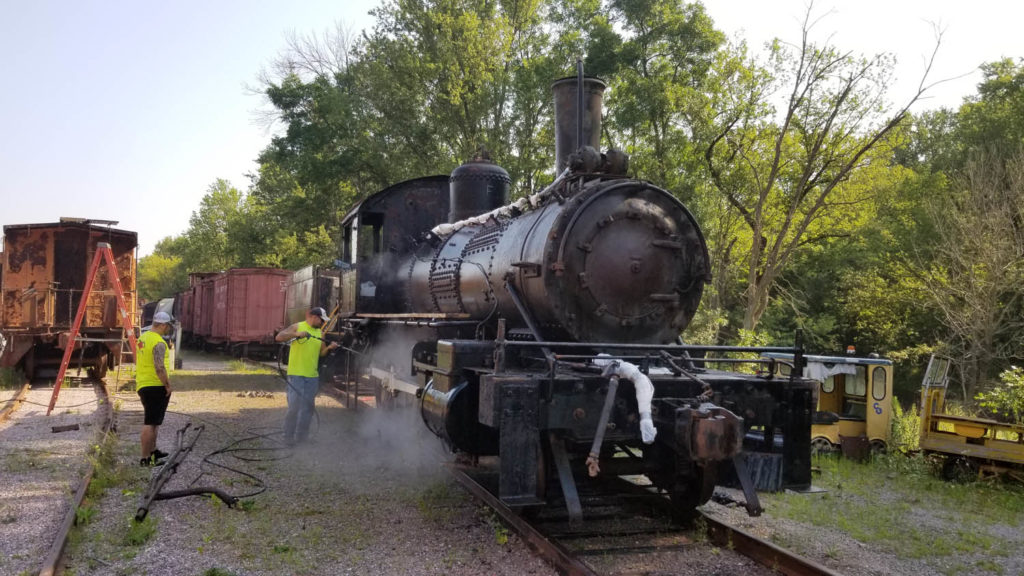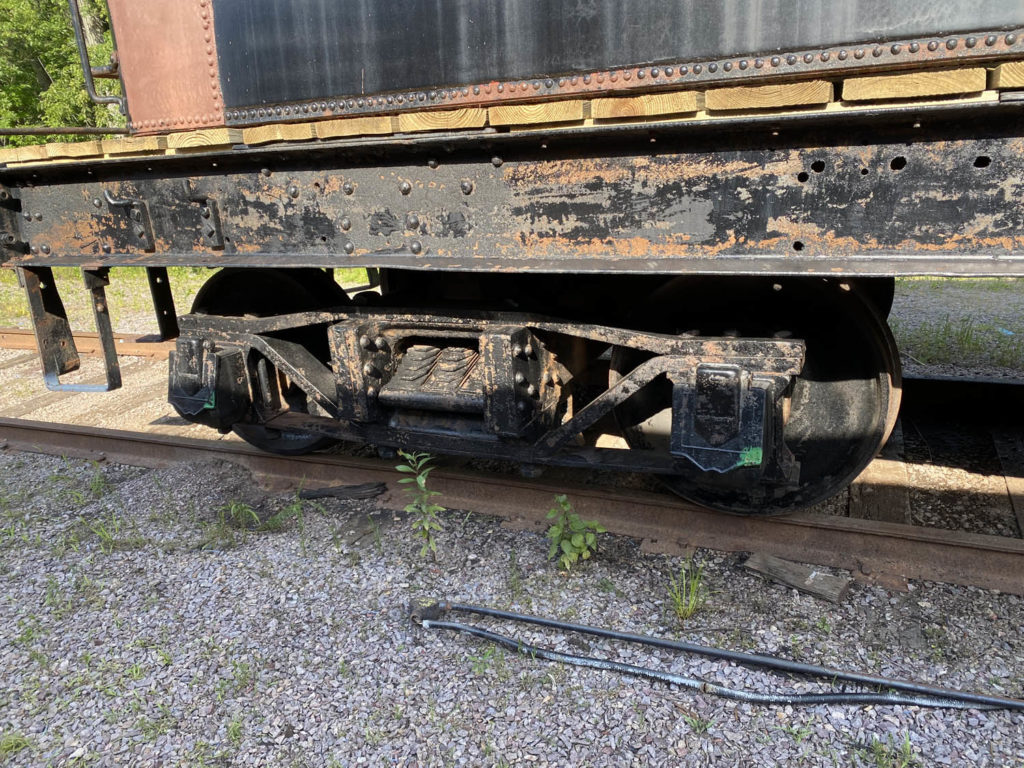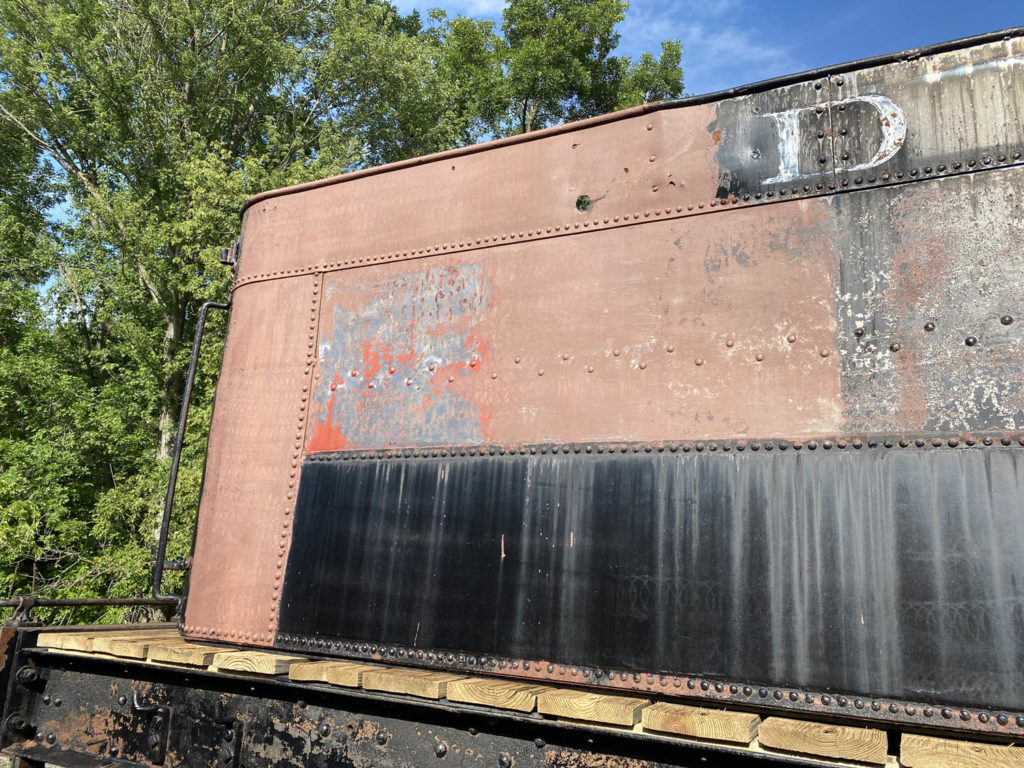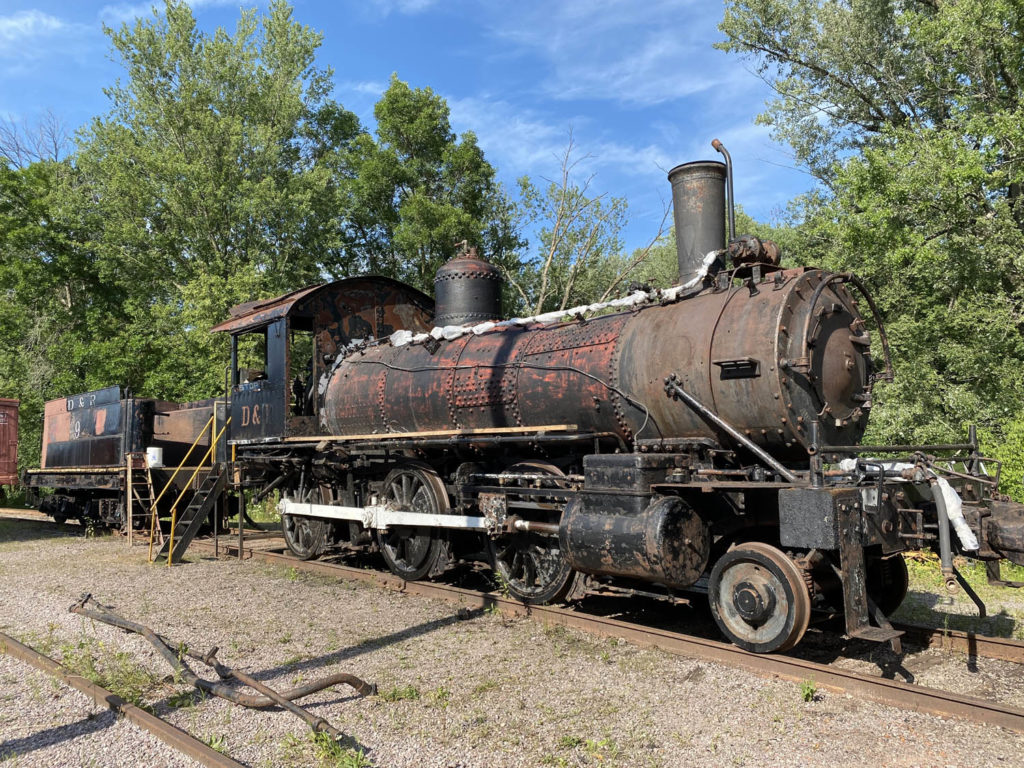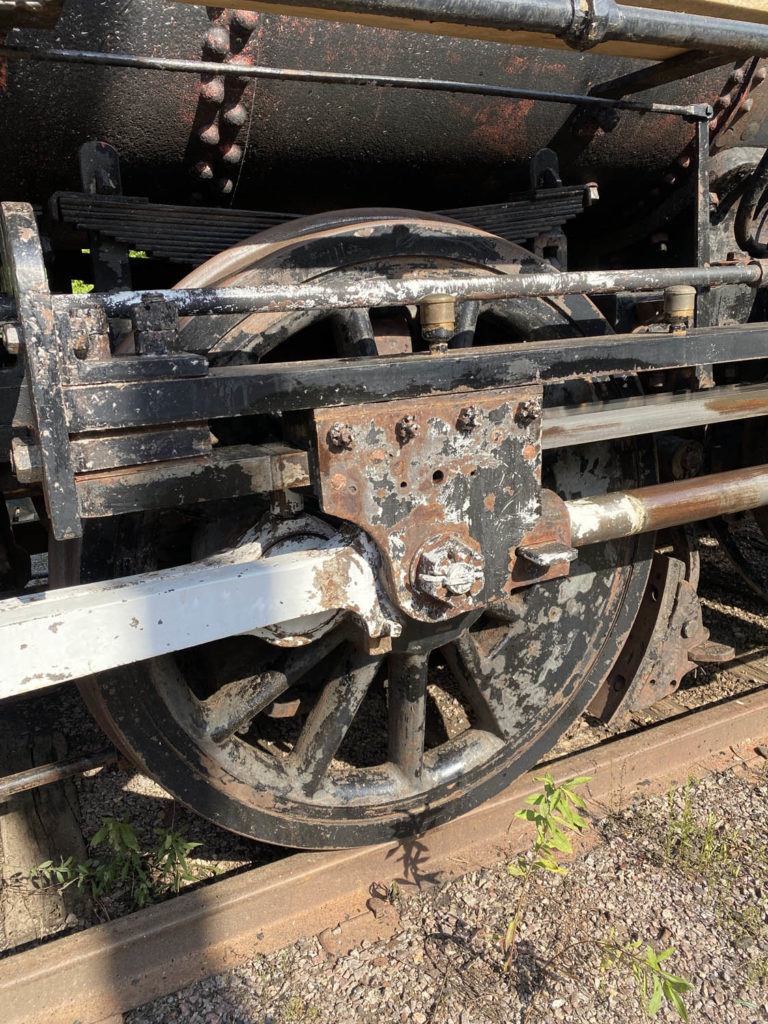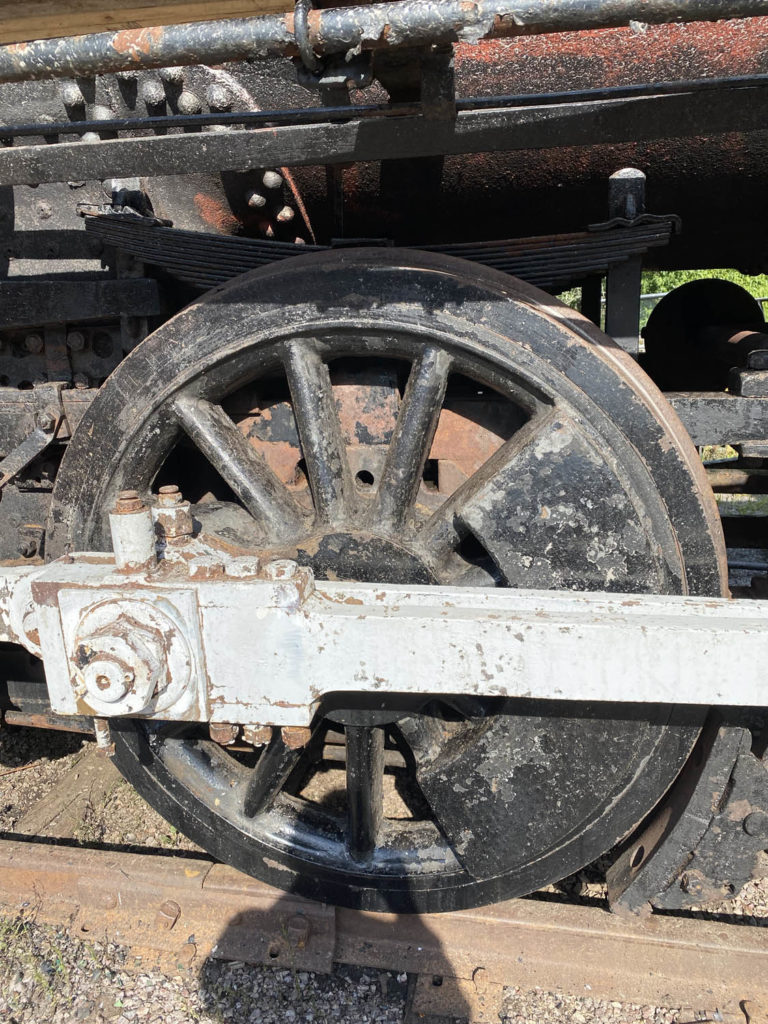Update text and photos by Jason Reiman
October 16-17, 2021; Fletch and his crew had a great weekend during the last volunteer session this year on the D&R #9. Fall is here, so we did what most folks in Wisconsin do; buttoned up and prepared. In hopes of not losing the great progress we made on the #9 in the last 6 months, we wrapped the locomotive and tender in layers of tarps and did our best to seal the elements out of the cab and coal space, and especially to keep snow and water from sitting anywhere on the locomotive or tender. It was not hard work, but a lot of guessing and anticipating where water or snow could cause a problem. We reinforced those locations with wood and bracing. Hopefully we find her high and dry in the spring.
We also had the pleasure of meeting a fan of the D&R #9 this weekend. He stopped by and walked all the way back to our little corner of the museum to say hi. I apologize we didn’t get your name, but you came all the way from Minneapolis, and I wanted to thank you for coming down, and taking the time to check out the #9. If you read this, please say hello to everyone here. If there are any other fans of the #9’s restoration, and you want to see in person how it’s coming along, please, by all means, come over and check us out. We are down at the far end of the car shop, and would love to say hi.
Finally, we want to wish a Very HAPPY BIRTHDAY to the little leader of our crew, Fletcher Reiman, who turned 10 years old on 10/23. Fletcher is a great reminder of what our purpose truly is when working on the #9. When we are outside tinkering with parts on the boiler, or planning our next move, we might find Fletcher inside the cab pulling levers and making steam noises. In his eyes, the #9 is literally coming back to life. But don’t be fooled, when Fletcher is not daydreaming about the good ole days of Steam, he is out turning wrenches with the rest of us. Fletchers’ family stopped by Saturday, and we all went out for a birthday supper, opened some presents, and a large crowd of Museum volunteers were on hand to sing him Happy Birthday. Thanks for keeping us young Fletch, and Happy Birthday.
And a HUGE thank you to ALL volunteers and vendors that have helped us get the #9 to the point she is at now. Please continue to watch over winter, as we will be tackling small projects here and there, and will keep you updated with those and more.

